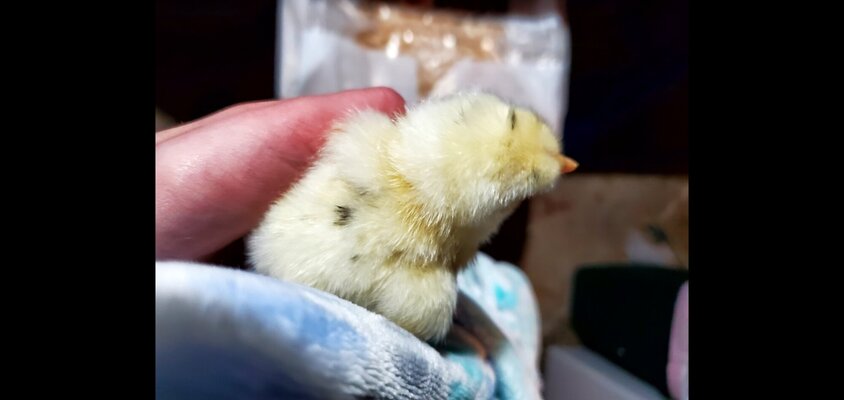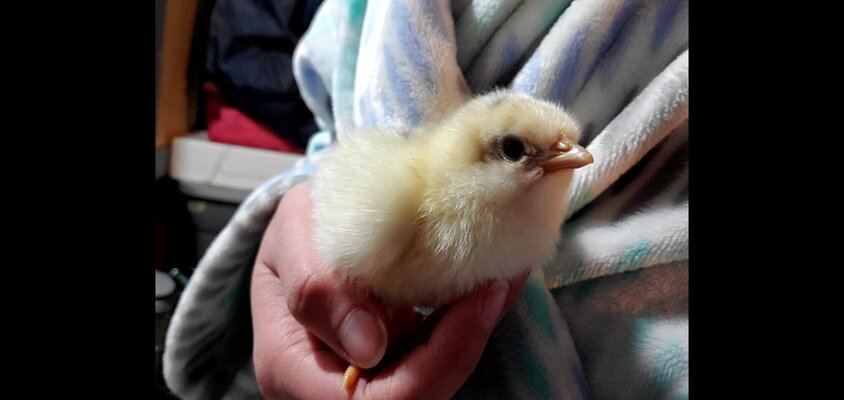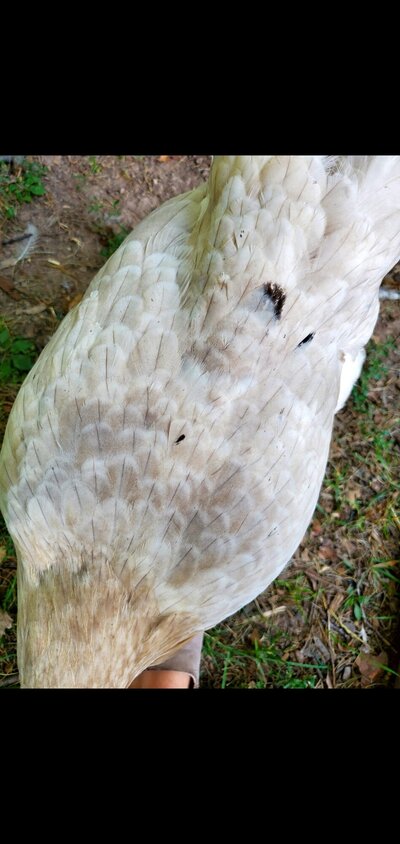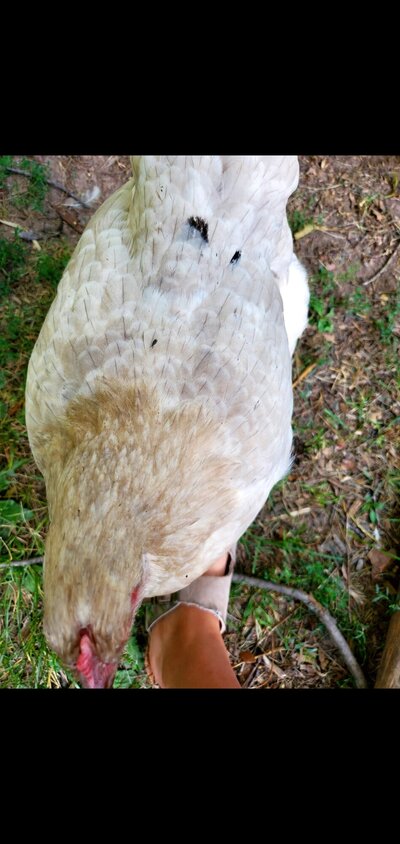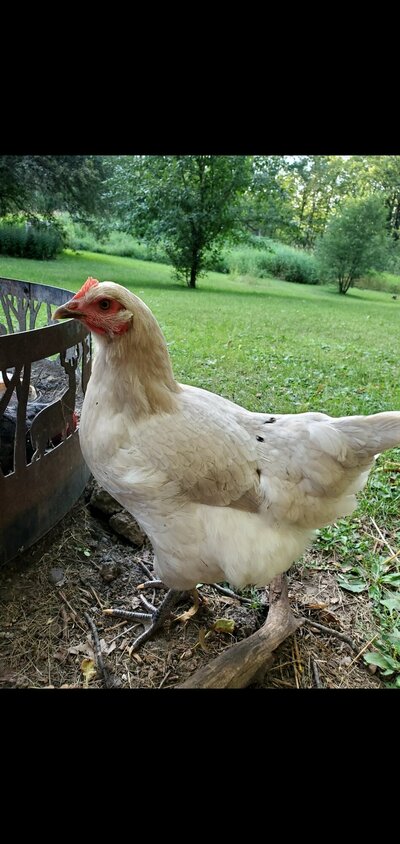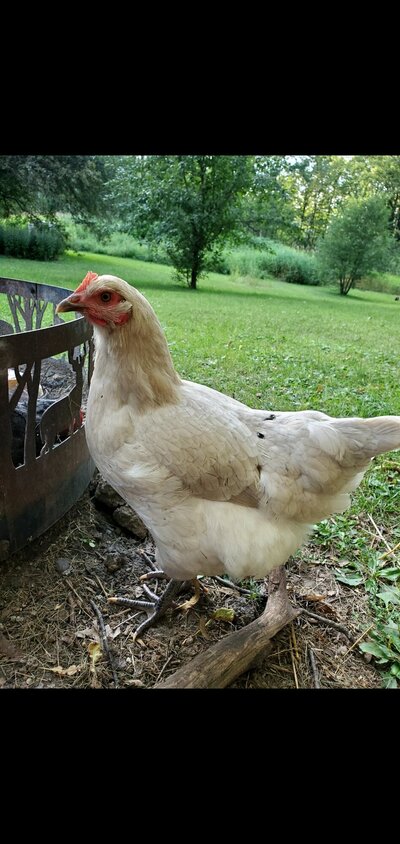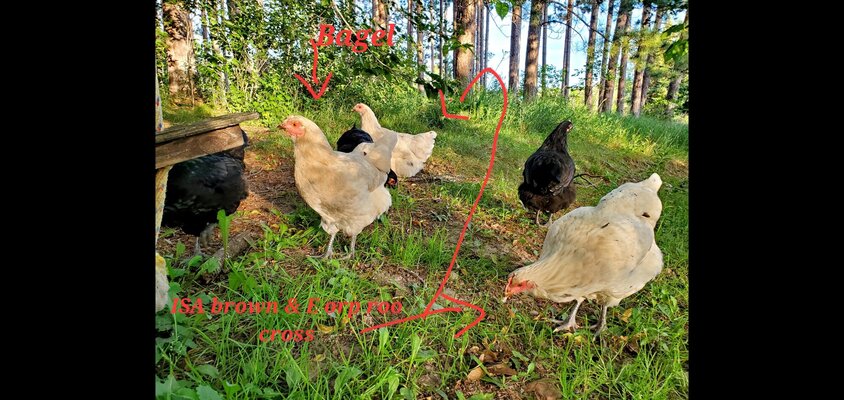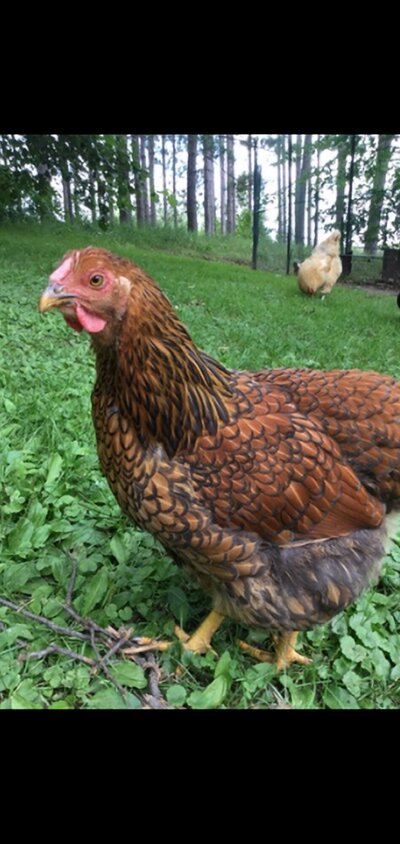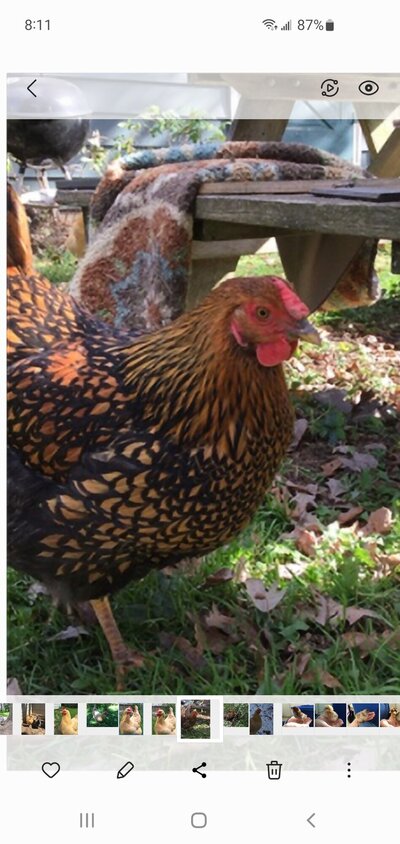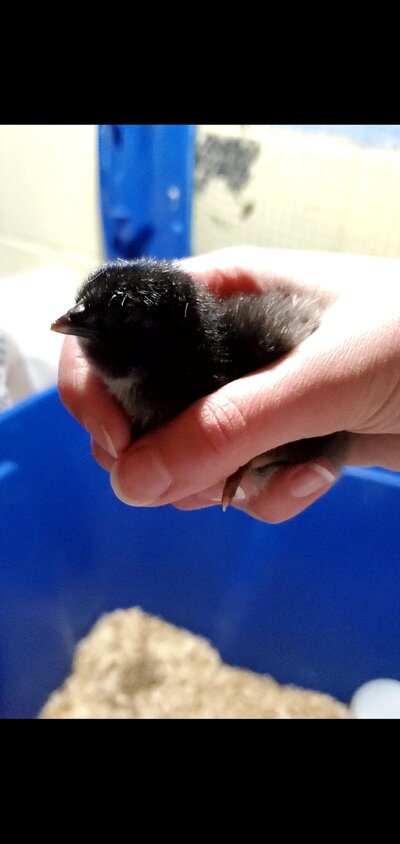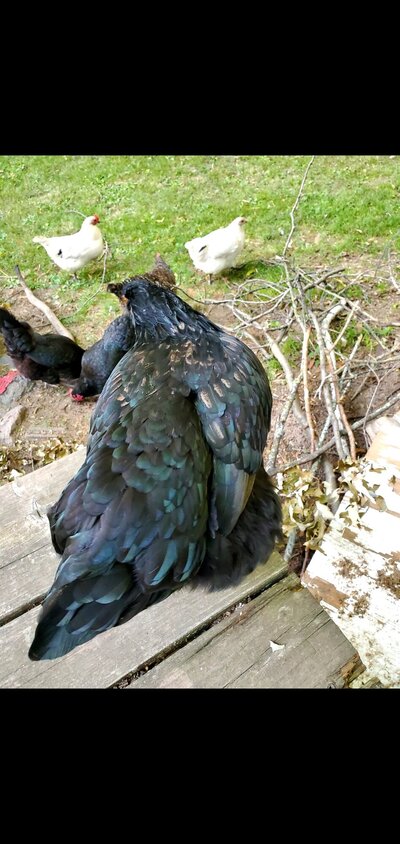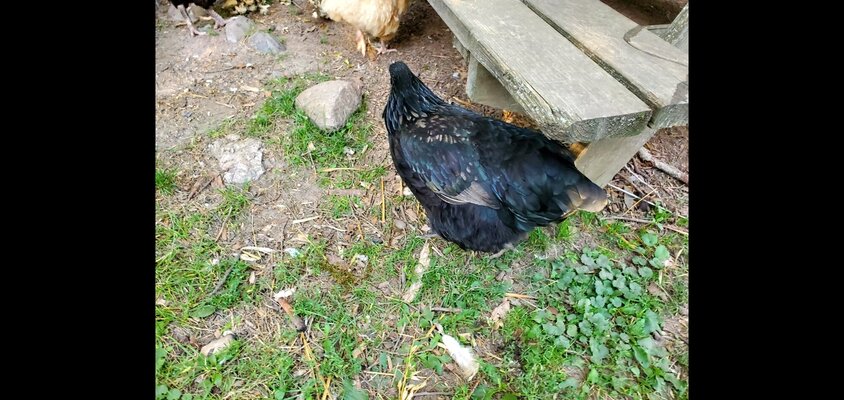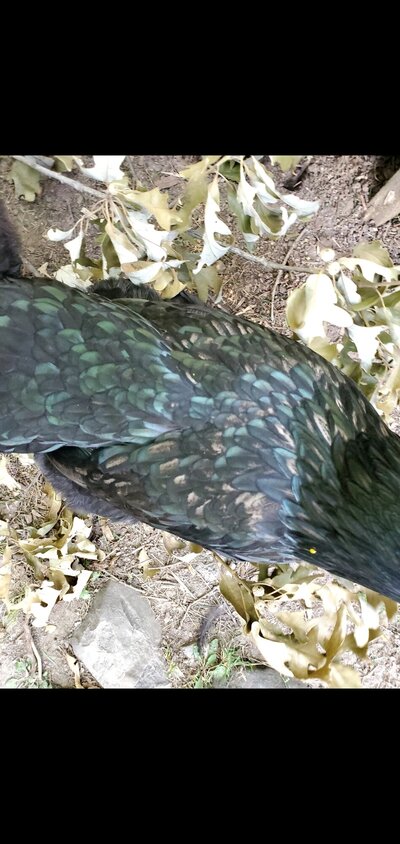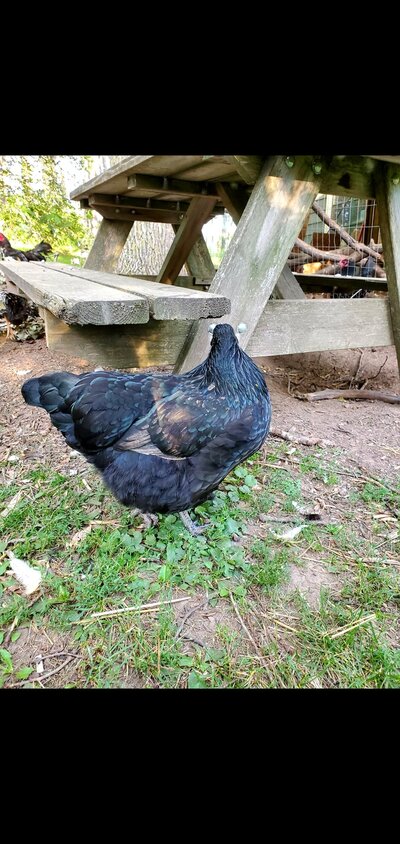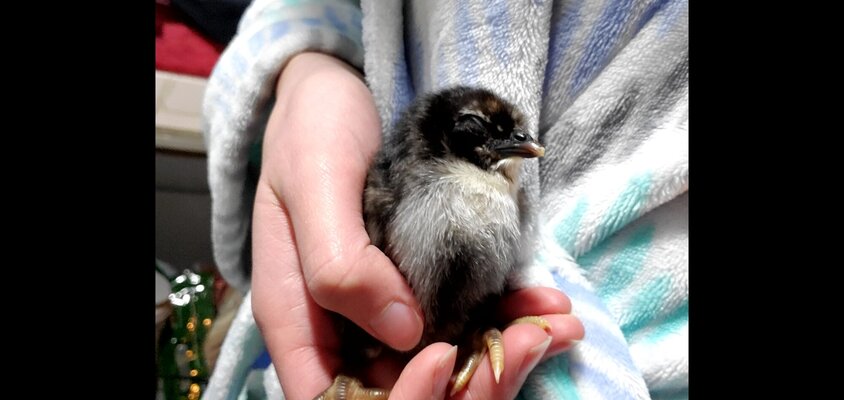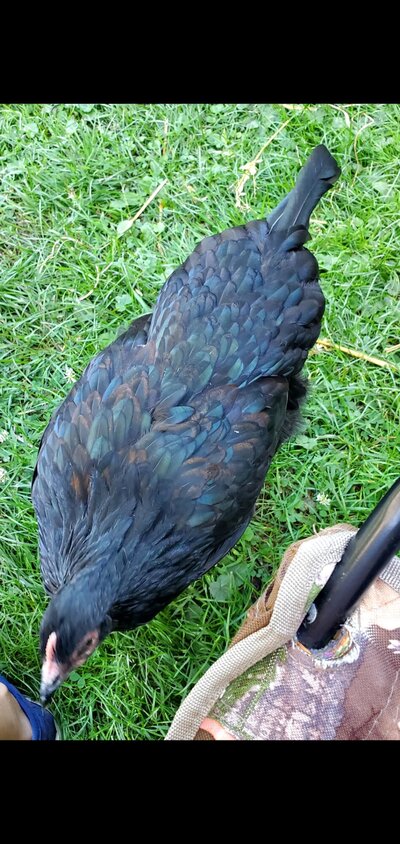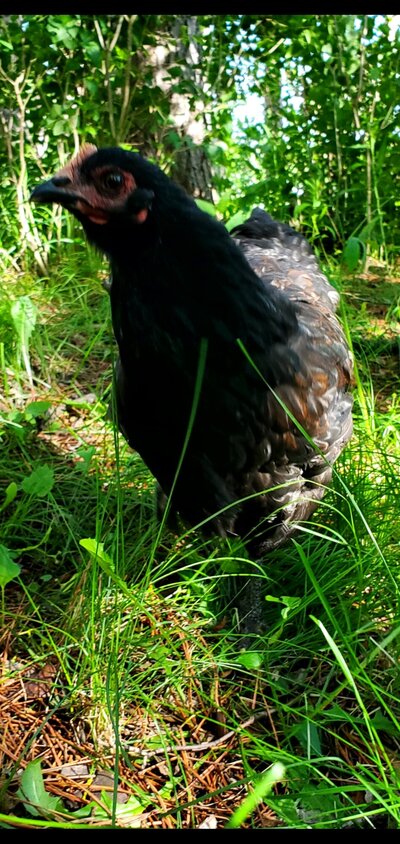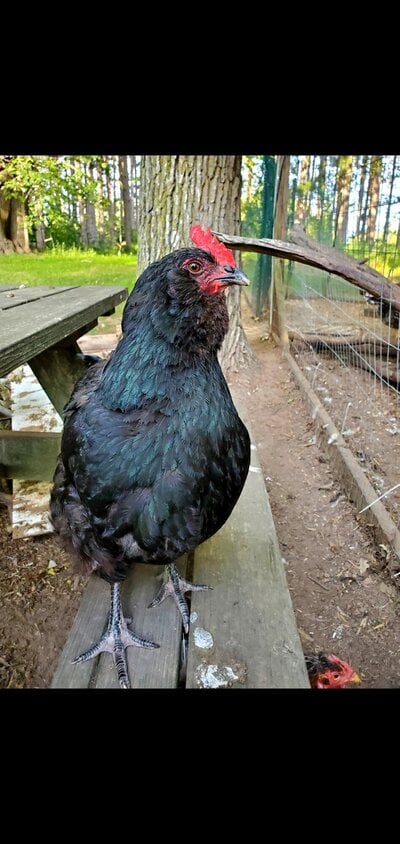Hello everyone! I raise pet backyard chicks and currently have 19 ranging from 5 months to 5 years in age. I have a few pullets that I can only guess as to what their colors & genetics are. I hatched them from my backyard flock, from my one rooster as the father. The rooster is supposedly purebred English orpington that we hatched from eggs we bought from eBay; he was black with leakage (strange groundcolor) out of a lavender father and a random english orpington mother (what i always assumed was a chocolate laced). I have all photos of their potential mothers and the rooster, along with the rooster's half siblings. The three pullets hatched around March 20. Two of the three are black with what I think is partial lacing, and the third is a strange khaki/dusty lace color.
I have tons of photos of all my flock and detailed records; I will post baby photos and adult photos of the ones that I think are related to the mystery pullets and their father.
I do know a bit about chicken genetics and have used the chicken calculator countless times. The only problem is that I have hit multiple dead ends and cannot find where that light dusty brown ground color comes from as seen in my rooster and his twin daughter.
The rooster had great English orpington body type and feather type, but his half sister does have facemuffs (she is just black but was supposed to be full English orpington). As I've had facemuffs/bubblehead chicks before, I have come to the conclusion that they are co-dominant to a clean face, so I also thought it was confusing that facemuffs appeared on her. I suppose I'm also asking for facemuff genetics.
I'm riddled with questions and genetics curiosity so if you know a lot about this stuff, please give me detailed responses! I'd love to learn more
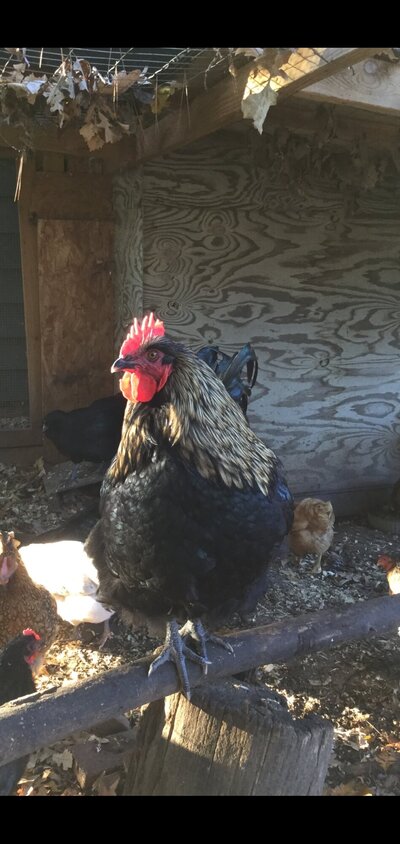 this is my rooster. Only 1 year old, and father to all seven chicks (rooster chick is no longer but I have photos if they are needed... his ground-color was only red, not the same brown as his father)
this is my rooster. Only 1 year old, and father to all seven chicks (rooster chick is no longer but I have photos if they are needed... his ground-color was only red, not the same brown as his father)
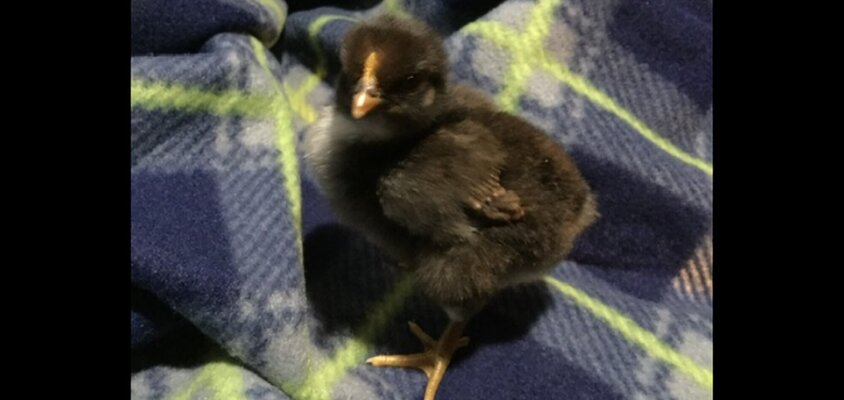 rooster dad as a chick
rooster dad as a chick
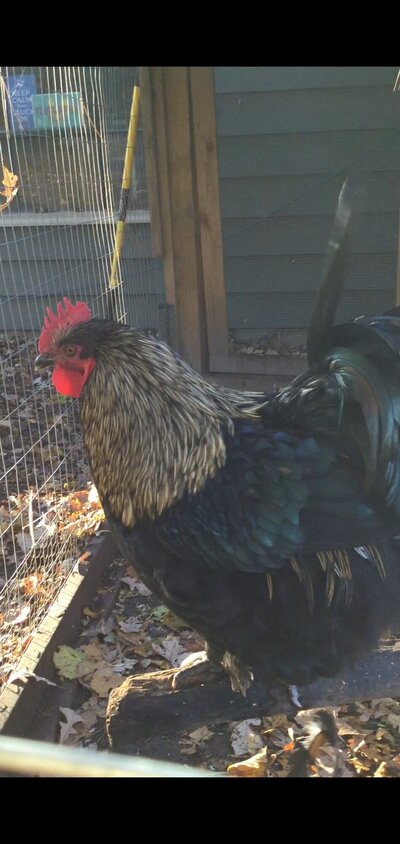
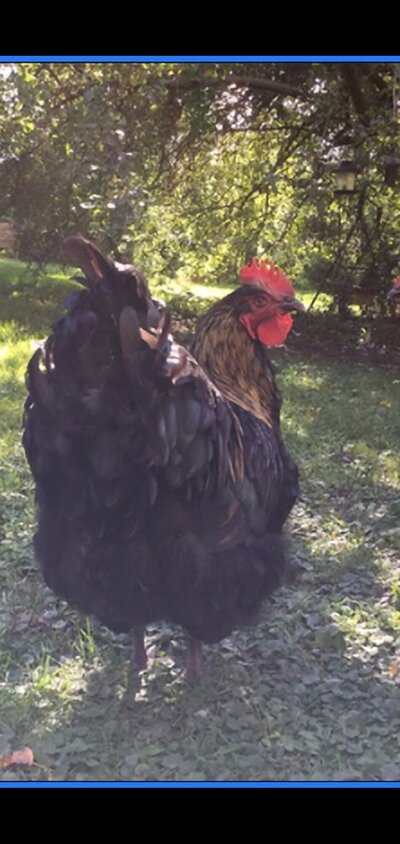 up is all the rooster. I'll post more pictures of the pullets in separate posts to keep photos organized.
up is all the rooster. I'll post more pictures of the pullets in separate posts to keep photos organized.
I have tons of photos of all my flock and detailed records; I will post baby photos and adult photos of the ones that I think are related to the mystery pullets and their father.
I do know a bit about chicken genetics and have used the chicken calculator countless times. The only problem is that I have hit multiple dead ends and cannot find where that light dusty brown ground color comes from as seen in my rooster and his twin daughter.
The rooster had great English orpington body type and feather type, but his half sister does have facemuffs (she is just black but was supposed to be full English orpington). As I've had facemuffs/bubblehead chicks before, I have come to the conclusion that they are co-dominant to a clean face, so I also thought it was confusing that facemuffs appeared on her. I suppose I'm also asking for facemuff genetics.
I'm riddled with questions and genetics curiosity so if you know a lot about this stuff, please give me detailed responses! I'd love to learn more
 this is my rooster. Only 1 year old, and father to all seven chicks (rooster chick is no longer but I have photos if they are needed... his ground-color was only red, not the same brown as his father)
this is my rooster. Only 1 year old, and father to all seven chicks (rooster chick is no longer but I have photos if they are needed... his ground-color was only red, not the same brown as his father)
 rooster dad as a chick
rooster dad as a chick

 up is all the rooster. I'll post more pictures of the pullets in separate posts to keep photos organized.
up is all the rooster. I'll post more pictures of the pullets in separate posts to keep photos organized.
